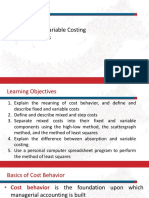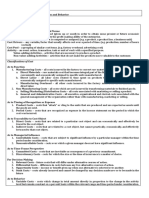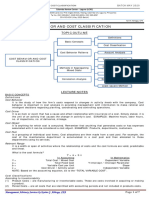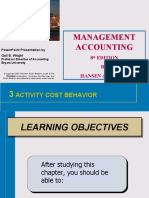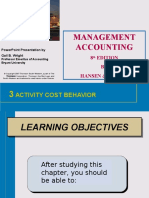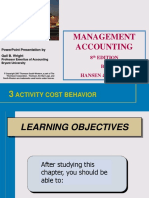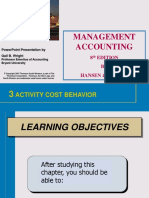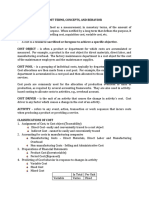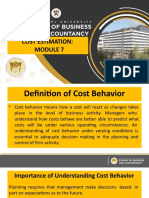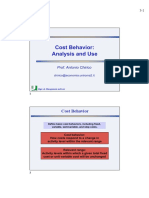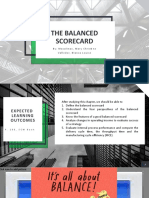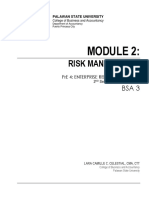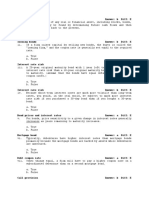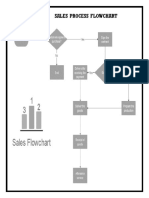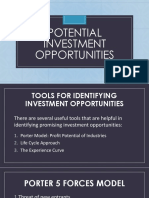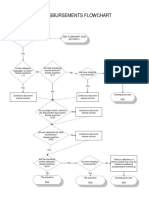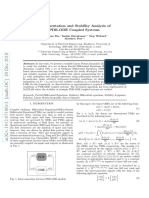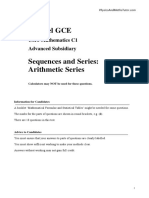0% found this document useful (0 votes)
113 views13 pagesBA2002 Module 3
This document provides an overview of module 3 on cost behavior for a cost and management accounting course. It covers 3 main topics:
1) The basics of fixed, variable, and mixed costs and how they relate to activity levels and output measures.
2) Quantitative methods for separating the fixed and variable components of mixed costs, including the high-low method and method of least squares.
3) Learning curves and how they impact cost behavior over time as cumulative production volumes increase.
The module aims to help students understand how costs change with different activity levels to inform planning, controlling, and decision making.
Uploaded by
Lara Camille CelestialCopyright
© © All Rights Reserved
We take content rights seriously. If you suspect this is your content, claim it here.
Available Formats
Download as DOCX, PDF, TXT or read online on Scribd
0% found this document useful (0 votes)
113 views13 pagesBA2002 Module 3
This document provides an overview of module 3 on cost behavior for a cost and management accounting course. It covers 3 main topics:
1) The basics of fixed, variable, and mixed costs and how they relate to activity levels and output measures.
2) Quantitative methods for separating the fixed and variable components of mixed costs, including the high-low method and method of least squares.
3) Learning curves and how they impact cost behavior over time as cumulative production volumes increase.
The module aims to help students understand how costs change with different activity levels to inform planning, controlling, and decision making.
Uploaded by
Lara Camille CelestialCopyright
© © All Rights Reserved
We take content rights seriously. If you suspect this is your content, claim it here.
Available Formats
Download as DOCX, PDF, TXT or read online on Scribd
/ 13




